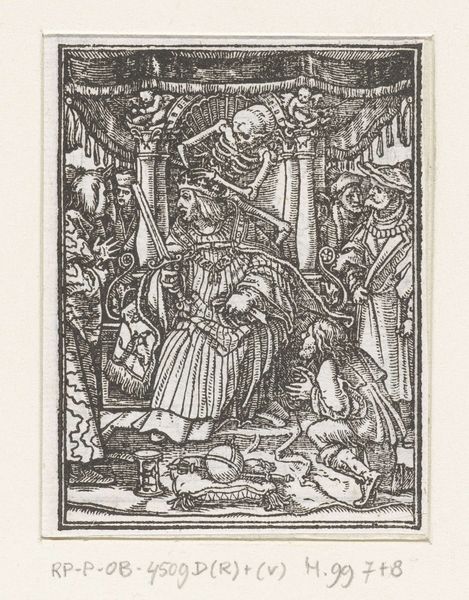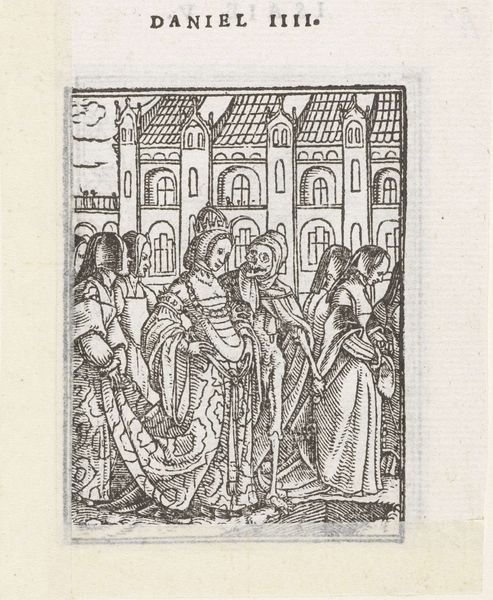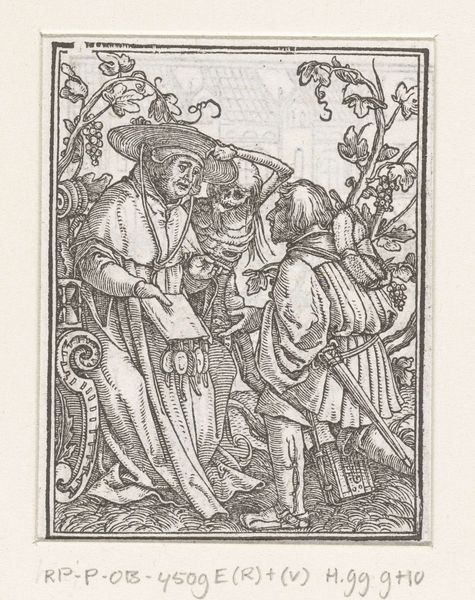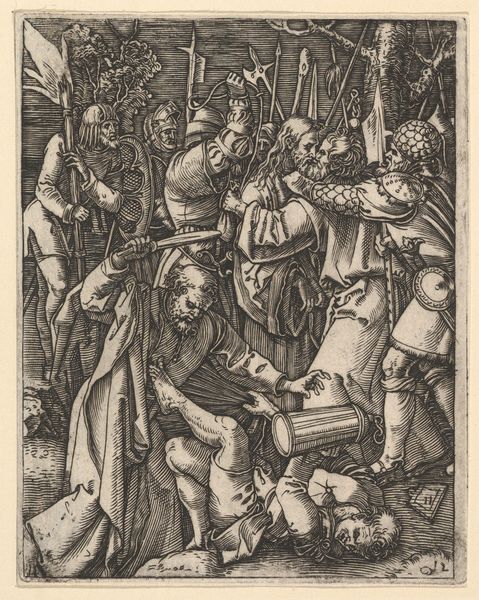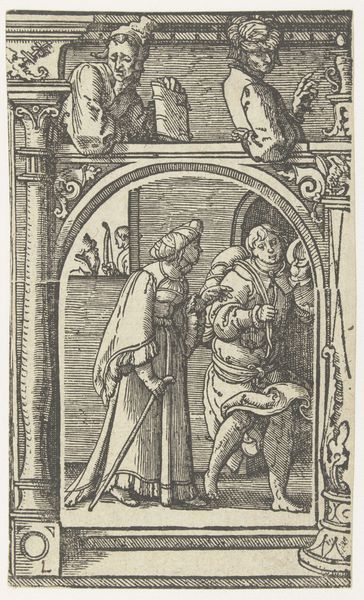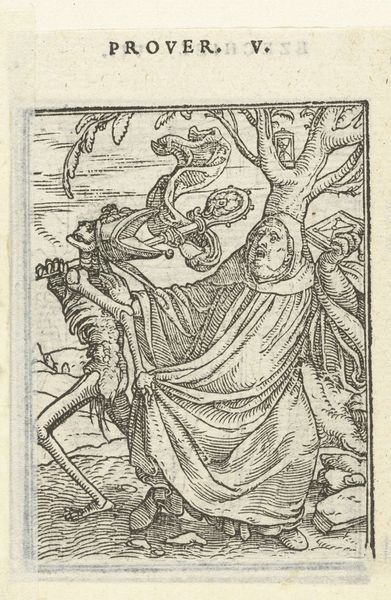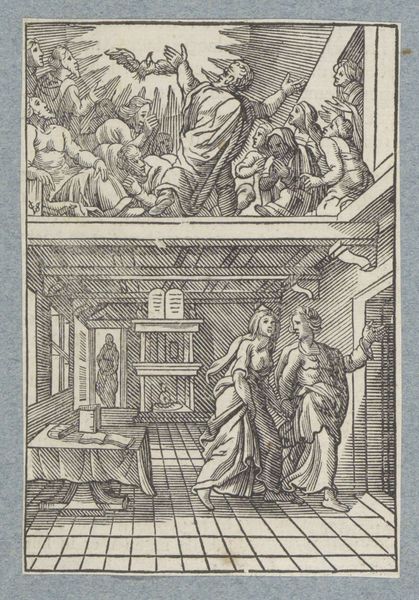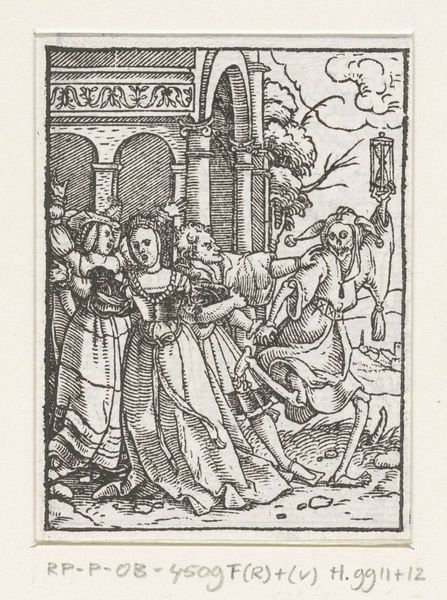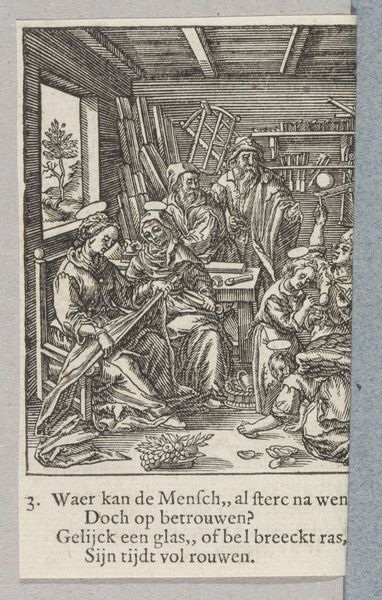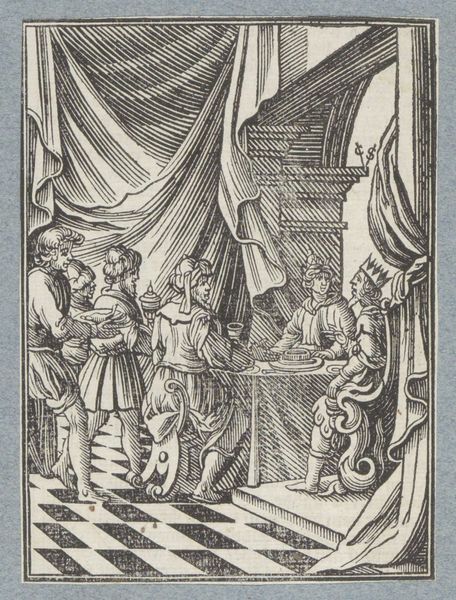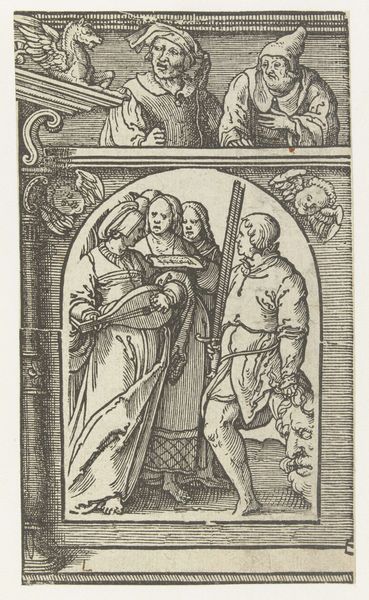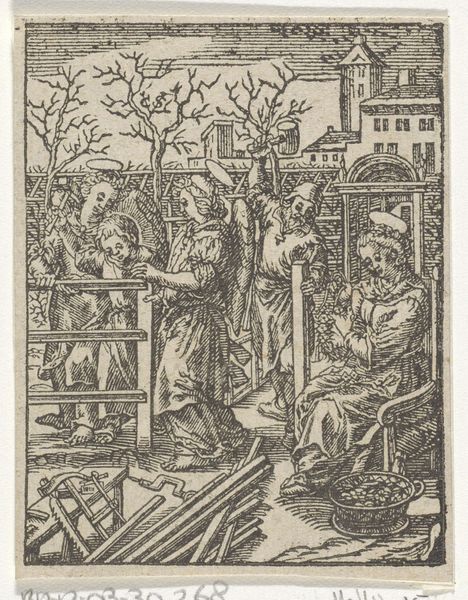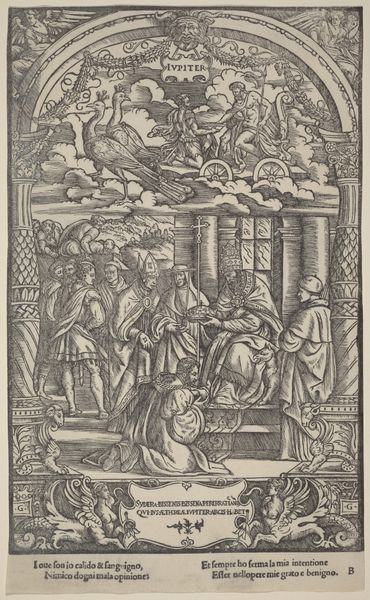
print, engraving
allegory
figuration
line
history-painting
northern-renaissance
engraving
Dimensions: height 65 mm, width 50 mm
Copyright: Rijks Museum: Open Domain
Curator: Ah, look at this, "Paus en de Dood", or "The Pope and Death," by Hans Holbein the Younger, made between 1524 and 1538. It’s currently housed right here at the Rijksmuseum. A compelling example of 16th-century engraving, isn’t it? Artist: Bleak, but with a twisted sense of humor. Death whispering in the Pope’s ear… the sheer cynicism! It’s the kind of scene that makes you a little nervous about power, like a memento mori in high office. What's happening exactly? Curator: Holbein was Swiss-German and had quite the successful career as a printmaker and painter. This print belongs to his famous series, "Dance of Death," where death appears in different professions and levels of society. Holbein here uses stark lines to criticize the Church, with Death acting as a papal advisor of sorts. A stark commentary during the Reformation period. Artist: You know, it's that "Dance of Death" motif that gets me. The grim reaper doesn’t discriminate! Holbein's skeleton looming behind the Pope is far scarier than any traditional depictions of the Devil. The Pope seems oblivious to the decaying advisor offering ‘guidance’. Curator: That’s the clever irony. The Church, meant to guide spiritually, is itself being guided by mortality. We see figures of the clergy bowing while Death, carrying the Papal bull, is in charge. It points to the institutional corruption Holbein saw. It challenges the divine authority they purported to have at a turbulent time in history. Artist: Right, power structures always reflecting back the inevitability of mortality, especially during this time of religious questioning. You look at this engraving, you understand that for Holbein, status and sacred authority didn't insulate anyone from life's grand finale. Ironic, grim, darkly funny… Curator: Well put. And as an engraving, this would have been easily reproducible, allowing his commentary to spread widely, reaching the eyes of people who maybe wouldn't have encountered critiques of the church. This made Holbein incredibly important during his time. Artist: So, as you walk away, maybe reflect: where does the power truly reside? Curator: An excellent provocation! Let's leave our visitors to ponder just that.
Comments
No comments
Be the first to comment and join the conversation on the ultimate creative platform.
